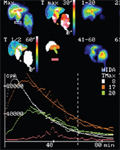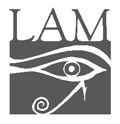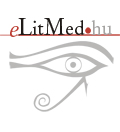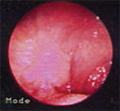The eLitMed.hu medical portal uses computer cookies for convenient operation. Detailed information can be found in the Cookie-policy.
Lege Artis Medicinae - 2005;15(01)
Content
[CARCINOID TUMORS]
[Carcinoid tumors are rare neoplasms: they are traditionally divided into three subgroups (foregut, midgut and hindgut tumors). Despite their neuroendocrine cell origin and the similarities in their histological structure, the molecular background, pathogenesis, clinical features, diagnostic and therapeutic procedures, as well as the prognosis of carcinoid tumors located at different sites may be highly variable. Although sensitive biochemical markers (serum chromogranin A concentration, urinary 5- hydroxyindoleacetic acid excretion) and localization methods (somatostatin receptor scintigraphy, positron emission tomography) are available, a considerable number of patients are only diagnosed at the late stages of the disease. When surgical cure is not obtainable such as in cases with advanced metastatic disease, surgical procedures to reduce tumoral tissue should be still considered. At present, the most effective drugs for the symptomatic treatment of carcinoid tumors are somatostatin analogues (octreotide, lanreotide). In addition to their beneficial effect on clinical symptoms they may stabilize tumor growth for many years and rarely, tumor regression is produced. Radioisotope-labelled somatostatin analogues are presently under clinical evaluation, which may offer new therapeutic means for patients with carcinoid tumors.]
[POST-CHOLECYSTECTOMY SYNDROME AND SPHINCTER OF ODDI DYSFUNCTION]
[After cholecystectomy, recurrent biliary-like pain, alone or in association with a transient increase in liver enzymes may be the clinical manifestation of the sphincter of Oddi dysfunction (SOD). Most of the clinical information concerning SOD refers to postcholecystectomy patients who have been classified according to clinical presentation, laboratory results and endoscopic retrograde cholangio-pancreatography (ERCP) findings as: biliary type I, biliary type II, and biliary type III. The prevalence of SOD has been reported to vary from 9 to 11% in unselected patients having postcholecystectomy syndrome up to 68% in a selected group of patients without organic disorder and complaining of postcholecystectomy pain. Diagnostic work-up of postcholecystectomy patients for suspected SOD includes liver biochemistry and pancreatic enzyme levels plus negative findings of structural abnormalities. Usually this would include transabdominal ultrasound, gastroscopy and ERCP. Depending on the available resources, endoscopic ultrasound and magnetic resonance cholangiography may precede endoscopic retrograde cholangiopancreatography in specific clinical conditions. In SOD patients, the endoscopic sphincter of Oddi manometry is the gold-standard diagnostic method to evaluate the abnormal motor function of the sphincter of Oddi. Quantitative evaluation of bile transit with cholescintigraphy is valuable in the decision whether to perform sphincter of Oddi manometry or to treat. The standard treatment for SOD is sphincterotomy. In biliary type I patients, the indication for endoscopic sphincterotomy is straightforward without the need of additional investigations. Slow bile transit on cholescintigraphy in biliary type II patients is an indication to perform endoscopic sphincterotomy without sphincter of Oddi manometry. Positive Nardi or Debray evocative test in biliary type III patients is an indication to perform sphincter of Oddi manometry. Medical therapy with nitrosovasodilatators, Ca-channel blockers, theophyllin compounds, β2 receptor agonists and anticholinerg drugs can be useful in biliary type II and type III patients preceding endoscopic sphincterotomy. If medical therapy fails, one might proceed to perform ERCP and endoscopic sphincterotomy but only in patients with abnormal SO manometry results.]
[EVIDENCE BASED ORAL ANTIDIABETIC THERAPY]
[Oral antidiabetic drugs are used in type 2 diabetic patients when diet and physical exercise have failed. The oral antidiabetic drugs available in Hungary can be classified according to their main effect. In this regard, antihyperglycaemic drugs with no hypoglycaemic potential (alfaglucosidase inhibitors, biguanides, thiazolidinedions) and drugs with a potential of insulin secretion (sulfonylureas, prandial glucose regulators) can be distinguished. Acarbose is mainly used in order to decrease the postprandial glucose excursion. Metformin is the drug of choice for obese, insulin resistant diabetic subjects while buformin is not preferable anymore since the availability of metformin. Rosiglitazone, the only thiazolidine-dion derivative in Hungary, can be used in combination therapy in diabetic subjects with clinical characteristics of the metabolic syndrome. The list of sulfonylureas contains five drugs in Hungary which enables differential therapeutical strategies to be performed. The prandial glucose regulators can be used either in monotherapy or in combination with other drugs at the relatively early stage of the disease. At present, the recommendations for treating diabetic patients with oral antidiabetic drugs can be based on clinical evidences.]
[THE FACTORS BEHIND CHRONIC PELVIC PAIN]
[There are no data available on the prevalence of chronic pelvic pain syndrome in Hungary. Even international literature provides an equivocal view of this disease. Dealing with the pelvic pain syndrome puts not only the patients in a challenging situation but the health care system as well. In many cases the etiology and the pathophysiology of the disease is not very well known. Endometriosis, pelvic inflammatory diseases and postoperative adhesions are the most frequent causes of the pelvic pain syndrome. However, irritable bowel syndrome, interstitial cystitis and the pain caused by diseases of the musculosceletal or nervous systems can also be accompanied with similar symptoms. Although the organic mechanisms of the formation and the modulation of pain are well known, the psychological factors should also be taken account. Psychotic status may generate pain on its own, or may influence the experience of the pain. In case of pelvic pain syndrome, similarly to other chronic diseases, the biopsychosocial model tries to integrate the physical, psychological and social factors of the pain.]
[DEPRESSION IN SOMATIC ILLNESSES - THE NEED FOR CONSULTATION-LIAISON PSYCHIATRY]
[INTRODUCTION - Affective disorders are widely prevalent causing a common health problem. They appear frequently as comorbid disorders in connection with somatic illnesses. In the Hungarian literature there are very little data available related to his topic. In this study the prevalence of depression was analyzed in different departments of general hospitals. PATIENTS AND METHODS - A questionnaire screening was performed in nine Hungarian hospitals among 2423 patients treated in general medical departments. The prevalence of depression and the use of antidepressants was measured. The Beck Depression Inventory was applied for the detection of depression. RESULTS - In the studied sample the mean score of depression was 12.9 on the Beck Depression Inventory. 46.4% of the patients reached a pathological score. The most prevalent depression was screened in the rheumatological, neurological and rehabilitation departments. The use of antidepressants was very low among the depressed patients (0-11.9%). CONCLUSION - Based on the data of the study it seems that screening and treatment of depression in general medical departments is of great importance, which stresses the practical significance of the consultation-liaison psychiatry.]
1.
Clinical Neuroscience
[Headache registry in Szeged: Experiences regarding to migraine patients]2.
Clinical Neuroscience
[The new target population of stroke awareness campaign: Kindergarten students ]3.
Clinical Neuroscience
Is there any difference in mortality rates of atrial fibrillation detected before or after ischemic stroke?4.
Clinical Neuroscience
Factors influencing the level of stigma in Parkinson’s disease in western Turkey5.
Clinical Neuroscience
[The effects of demographic and clinical factors on the severity of poststroke aphasia]1.
2.
3.
4.
5.












